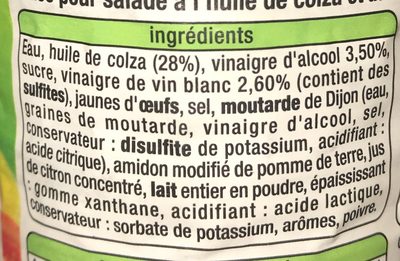Sauce crudités nature 50 cl - Auchan - 0.5 l
This product page is not complete. You can help to complete it by editing it and adding more data from the photos we have, or by taking more photos using the app for Android or iPhone/iPad. Thank you!
×
Some of the data for this product has been provided directly by the manufacturer AUCHAN APAW.
Barcode: 3596710195558 (EAN / EAN-13)
Common name: Sauce pour salade à l'huile de colza et aux vinaigres
Quantity: 0.5 l
Packaging: Bouteille, Plastique
Brands: Auchan
Categories: Condiments, Sauces, Epicerie, Sauces crudités, fr:Sauces-crudites
Stores: Auchan
Matching with your preferences
Environment
Packaging
Transportation
Other information
Preparation: :Agiter avant emploi
Report a problem
Data sources
The manufacturer AUCHAN APAW uses Agena3000 to automatically transmit data and photos for its products.
Product added on by openfoodfacts-contributors
Last edit of product page on by inf.
Product page also edited by alexfauquette, date-limite-app, halal-app-chakib, keragui, kiliweb, org-auchan-apaw, packbot, teolemon, yuka.R2E0SExMVmNoZDAxbThFK3h4M014ZDk4NjdhclF6NmxjL2RQSVE9PQ, yuka.UmJFNU1yc3V1TWsxaWRzai9UckkvOEJSeVpPc1F6cnJEdVFWSVE9PQ.











